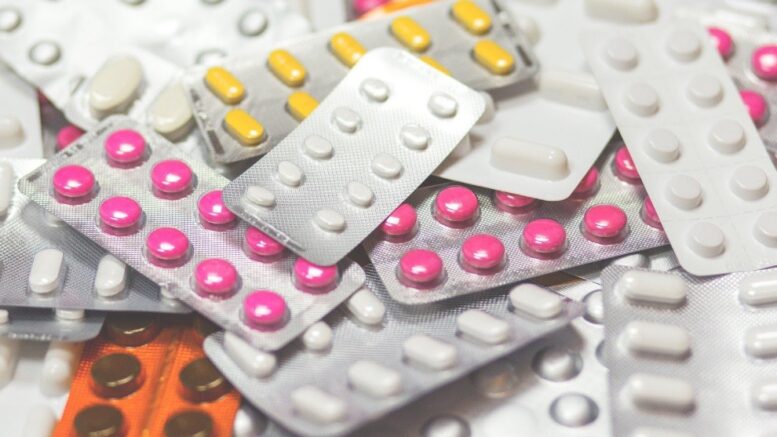Pharmaceutical manufacturing can be a complex process with much to consider but if done correctly, it helps ensure effective drugs that meet all of the stringent requirements in terms of safety and efficacy. In this blog post, we’ll cover the 7 key components that you should familiarize yourself with when it comes to pharmaceutical manufacturing. From understanding regulatory guidelines to choosing the right facility for production to managing the cost aspects—this post covers it all! So without further ado, let’s dive into what makes up the structure of a successful pharmaceutical manufacturer.
Quality Control
Quality control is a cornerstone of Pharmaceutical Manufacturing, aimed at maintaining the highest standards of safety and efficacy in all products. This process involves stringent measures and protocols to ensure accuracy and compliance with defined industry standards and regulations. Every stage of manufacturing is meticulously monitored, from the sourcing of raw materials to the final packaging of the product. Advanced testing methodologies and technologies are deployed to verify the composition, purity, and potency of pharmaceuticals.
By upholding these rigorous quality control procedures, the pharmaceutical industry can guarantee that the medications produced are of the utmost quality, meeting the expectations of safety, efficacy, and reliability for patients worldwide.
Equipment and Manufacturing Processes
Choosing the right equipment and establishing efficient manufacturing processes play significant roles in the pharmaceutical industry. Machinery used in the production process needs to be reliable, robust, and capable of maintaining sterility throughout operation. Simultaneously, manufacturing processes need to be designed with efficiency in mind. By optimizing processes, companies can increase productivity, reduce waste, and ultimately, lower the overall costs of production. Additionally, the implementation of technologies like automation and AI can further streamline processes, minimize human error, and increase overall operational efficiency.
Key Pieces of Equipment
In the realm of pharmaceutical manufacturing, several vital components play a crucial role in ensuring the production of high-quality medications. One fundamental aspect lies in the specialized equipment employed throughout the process. Mixers and Blenders are essential for homogenizing the ingredients effectively, while an EPDM rubber gasket ensures proper sealing in various machinery. Tablet Presses, another key piece of equipment, enable the efficient and accurate compression of powdered medications into tablets. Capsule Filling Machines automate the encapsulation process, precisely filling capsules with the intended dosage.

These components, among others, constitute the backbone of pharmaceutical manufacturing, ensuring the production of safe and effective medications for diverse healthcare needs.
Raw Materials and Supplies
The acquisition of high-quality raw materials and supplies is a vital component in pharmaceutical manufacturing. These materials serve as the building blocks of medications, hence their quality directly influences the efficacy, safety, and stability of the final product. Pharmaceutical companies need to source these materials from reliable suppliers who adhere to strict quality control standards. F
rom active pharmaceutical ingredients (APIs) to excipients, every component has a role to play. APIs provide the intended therapeutic effect, while excipients, though inactive, contribute to the drug’s color, taste, and shelf life. Keeping a close eye on the quality of these raw materials and ensuring their proper storage and handling is crucial to producing consistent, high-quality pharmaceutical products.
Packaging and Labeling
Packaging and labeling serve a critical role in pharmaceutical manufacturing. Packaging must be designed to protect the product from contamination and damage during transport and storage. It must also be child-resistant and senior-friendly, adhering to regulatory standards. Equally vital is labeling, which provides essential information about the product, including its name, ingredients, dosage instructions, expiry date, and any necessary warnings. The label is often the first point of interaction between the consumer and the product, so clear and accurate labeling is crucial to ensure safe and effective usage of the medication.
Regulatory Compliance
Regulatory compliance forms the backbone of pharmaceutical manufacturing, ensuring that every process and product conforms to established laws, regulations, and guidelines. These regulations, which may vary by country, encompass the sourcing and testing of raw materials, the manufacturing process, the packaging and labeling of finished products, and the post-marketing surveillance of the drug. Ensuring constant compliance requires a thorough understanding of these regulations and a robust internal auditing system.
A failure to maintain regulatory compliance can lead to severe penalties, including fines, product recalls, and a loss of public trust, emphasizing the critical role of regulatory compliance in pharmaceutical manufacturing.
Risk Management
Risk management in pharmaceutical manufacturing is essential to ensure a smooth and uninterrupted production process. It involves identifying potential risks and vulnerabilities in the manufacturing process and taking proactive measures to mitigate them. These risks could range from equipment failure and raw material contamination to deviations in the manufacturing process. By adopting a systematic risk management approach, pharmaceutical companies can prevent costly production disruptions, maintain quality standards, and ensure the safety and efficacy of their products. This process includes consistent monitoring, regular audits, and prompt corrective actions when potential risks are identified.
Conclusion
Pharmaceutical manufacturing is a complex and multifaceted process, requiring the careful coordination of numerous factors. From the selection of specialized equipment and high-quality raw materials to the design of safe and informative packaging, each step plays a pivotal role in ensuring the production of effective, safe, and reliable medications.
Moreover, the importance of abiding by regulatory guidelines and employing robust risk management strategies cannot be overstated, as these elements are crucial to maintaining operational efficiency, public trust, and patient safety. By attending to these critical components, pharmaceutical companies can continue to meet the healthcare needs of the global population, delivering medications that offer therapeutic benefits and improve quality of life.
